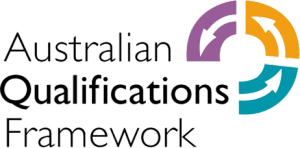
Upward Bound is a federally funded educational program within the United States. The program is one of a cluster of programs now referred to as TRiO, all of which owe their existence to the federal Economic Opportunity Act of 1964 and the Higher Education Act of 1965. Upward Bound programs are implemented and monitored by the United States Department of Education. The goal of Upward Bound is to provide certain categories of high school students better opportunities for attending college. The categories of greatest concern are those with low income, those with parents who did not attend college, and those living in rural areas. The program works through individual grants, each of which covers a restricted geographic area and provides services to approximately 59,000 students annually. The program focuses on academic and nonacademic resources and activities like visits to museums or tutoring for school work. Students are encouraged to be involved in Upward Bound for the entire academic year and a 6-week long summer program. Many students who are also granted access into the Upward Bound program are labeled as first generation college students, who are students that are the first in their family to attend college. This program is set in place for students who come from low income families as well as underrepresented schools and gives them an opportunity to excel in college.
Nurse education consists of the theoretical and practical training provided to nurses with the purpose to prepare them for their duties as nursing care professionals. This education is provided to student nurses by experienced nurses and other medical professionals who have qualified or experienced for educational tasks, traditionally in a type of professional school known as a nursing school of college of nursing. Most countries offer nurse education courses that can be relevant to general nursing or to specialized areas including mental health nursing, pediatric nursing, and post-operative nursing. Nurse education also provides post-qualification courses in specialist subjects within nursing.

The Australian Qualifications Framework (AQF) specifies the standards for educational qualifications in Australia. It is administered nationally by the Australian Government's Department of Industry, with oversight from the States and Territories, through the Standing Council of Tertiary Education Skills and Employment. While the AQF specifies the standards, education and training organisations are authorised by accrediting authorities to issue a qualification.
Summer school is a school, or a program generally sponsored by a school or a school district, or provided by a private company, that provides lessons and activities during the summer vacation. Participation in summer schools has been shown to have substantial beneficial effects on education.

Freedom High School is located in Orlando, Florida. It is one of twenty public high schools in Orange County. The school was established in 2003 in order to relieve crowding at nearby Cypress Creek High School; like other relief high schools, they share a rivalry. It is a rivalry dubbed as the South Orange Classic. Freedom's feeder schools are Freedom Middle School, Hunter's Creek Middle School and West Ridge Middle School in Oak Ridge. The current principal is Mr. Charles France. It has nearly identical campus layouts as Olympia High School and Timber Creek High School. Lake Brantley High School in neighboring Seminole County has similar colors and nickname.

College of Alameda is a public community college in Alameda, California. It is part of the Peralta Community College District and was opened in 1968. Since 1970 the college has held classes on a 62-acre campus at the intersection of Webster Street and Ralph Appezzato Memorial Parkway in Alameda.

Murrah High School is a public high school located in Jackson, Mississippi, United States. It is a part of the Jackson Public School District.
Basic writing, or developmental writing, is a subdiscipline of composition studies which focuses on the writing of students sometimes otherwise called "remedial" or "underprepared", usually freshman college students.

Bailey Magnet High School, originally known as Bailey Junior High School and now Bailey APAC Middle School, is a middle school in Jackson, Mississippi, United States. The mascot of Bailey Magnet Middle School is the Mighty Knights.

Opelika City Schools (OCS) is a school district headquartered in Opelika, Alabama. The district is accredited by the Alabama State Department of Education and the Southern Association of Colleges and Schools. The school system enrolls approximately 4,300 students on nine campuses. Opelika has three primary schools with grades K–2, Southview, Jeter, and Carver, three intermediate schools with grades 3–5, West Forest, Northside, and Morris Avenue, Opelika Middle School with grades 6–8, Opelika High School with grades 9–12, and one at-risk school, Opelika Learning Center. Opelika's schools have traditionally had strong programs in technology and the arts.
In the United States education system, School Psychological Examiners assess the needs of students in schools for special education services or other interventions. The post requires a relevant postgraduate qualification and specialist training. This role is distinct within school psychology from that of the psychiatrist, clinical psychologist and psychometrist.
In the United States, community colleges are primarily two-year public institutions of tertiary education. Community colleges offer undergraduate education in the form of an associate degree. In addition community colleges also offer remedial education, GEDs, high school diplomas, technical diplomas and academic certificates, and in rare cases, a limited number of 4-year bachelor's degrees. After graduating from a community college, some students transfer to a four-year college or university to continue their studies leading to a bachelor's degree. Community college is tuition-free for selected students in 47 states, often under the name College Promise. Most community college instructors have advanced degrees but serve as part-time low wage employees.
Cooling out is an informal set of practices used by colleges, especially two-year, junior, and community colleges, to handle students whose lack of academic ability or other resources prevent them from achieving the educational goals they have developed for themselves such as attaining a bachelor's degree. The purpose of cooling out is to encourage the students to adjust their expectations or redefine failure. The practices contrast with "warming up", in which students who aspire to easier educational goals are encouraged to reach for more ambitious degrees.
Placement testing is a practice that many colleges and universities use to assess college readiness and determine which classes a student should initially take. Since most two-year colleges have open, non-competitive admissions policies, many students are admitted without college-level academic qualifications. Placement exams or placement tests assess abilities in English, mathematics and reading; they may also be used in other disciplines such as foreign languages, computer and internet technologies, health and natural sciences. The goal is to offer low-scoring students remedial coursework to prepare them for regular coursework.

The development and implementation of the Special Assistance Program in Victorian Primary Schools during the period 1979 - 1982 constituted the most significant innovation in the provision of special education services to children experiencing learning difficulties and in addressing declining literacy and numeracy standards. Up until the political directive to initiate this program was given, there had been no policy within the Department of Education and Early Childhood Development directing Principals of Primary Schools to develop special programs for pupils at risk of illiteracy and innumeracy.
The establishment of the Special Assistance Program in Victorian Primary Schools was the most significant development in remedial education in Australia. It was a Hamer Liberal Government initiated strategic plan designed to address falling literacy and numeracy standards. The totally new component of the Special Assistance Program was the provision of 1000 Special Assistance Resource Teachers (SARTs) for the delivery of services to children with learning needs. These designated teachers were also given an on-site school responsibility for facilitating a productive relationship between parents and pupils and teachers. The program involved the training of these primary teachers as SARTs and their placement in schools. Their role was the early detection and remediation of children at risk of illiteracy and innumeracy. The position was the focus of this substantial change in the delivery of special educational services to children at risk of illiteracy and innumeracy. The role incorporated all the elements of services previously performed by external consultants visiting schools.
The Community College Research Center (CCRC) is an independent research center that studies two-year colleges and open-access four-year institutions in the United States. Its researchers use qualitative and quantitative methods to assess programs, policies, and reforms in areas including remedial education, academic advising, institutional effectiveness, and college transfer. CCRC is housed at Teachers College, Columbia University, and is led by Thomas W. Brock.
Alternative pathways in education are alternative means of obtaining educational qualifications, other than the traditional means of gaining access to or completing the required study to obtain the educational qualifications.
A high school diploma is a diploma awarded upon graduation of high school. A high school diploma is awarded after completion of courses of studies lasting four years, typically from grade 9 to grade 12. It is the school leaving qualification in the United States and Canada.
Bridget Terry Long is the 12th Dean of the Harvard Graduate School of Education, and the Saris Professor of Education and Economics. She is an economist whose research focuses on college access and success. Long is a Faculty Research Associate at the National Bureau of Economic Research and a member of the National Academy of Education.







